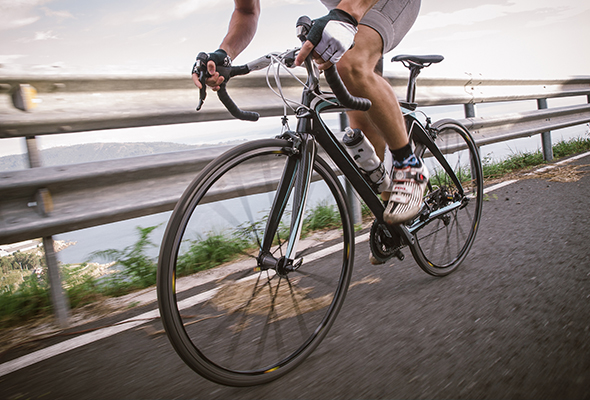
Although avid cyclists will say that the cycling season lasts all year round, most people put their bikes away in the garage or basement for the winter. With the arrival of spring, it is well worth preparing your equipment properly, so you can use it for as long as possible.
Regardless of whether you belong among those cyclists for whom the season lasts all year round, or are one of those whose bike goes into winter hibernation, it is worth giving it a thorough service at least once a year. We have prepared a checklist of tasks that should be performed to make the equipment last as long as possible.
There is nothing nicer than riding on clean equipment. If you washed your bike before storing it in the basement, it’s worth at least wiping it down with a damp cloth. However, it is good to wash the bike properly. A bucket with warm water and a special bicycle cleaner (if you don’t have one, replace it with e.g. dishwashing liquid) and a brush will be helpful. You can also use a high pressure washer or a garden hose, but remember not to use too much pressure. After washing, wipe the bike with a clean, dry cloth (preferably microfibre).
After washing the bike, be sure to carefully inspect the tires – check the level of tread wear and their general technical condition (possible cracks, deformations, embedded pebbles, etc.). It is also necessary to check the tire pressure – in this case, it is advisable to follow the manufacturer’s guidelines.
When washing your bike, special attention should be paid to the chain, which should be degreased. If a chain master link is installed on your bike, just remove the chain, throw it into a container with a small amount of petroleum (or other degreaser) and mix. If you do not have a chain master link on your chain, wash the chain thoroughly with a cloth soaked in degreaser or with a petroleum brush.
Immediately after cleaning, it is necessary to thoroughly lubricate the chain – each link with one drop of oil, wiping the excess with a paper towel. It is best to use an oil specially designed for this purpose and remember that the popular WD-40 (it has rust-removing properties, but poor lubricating properties) as well as chainsaw and cooking oils (sunflower oil, olive oil) are not suitable for this.
By the way, it is also worth lubricating other elements – derailleur mechanisms, brakes, shifters, shock absorber.
For safe riding, it is necessary to check the level of wear and tear of the brake pads. When cleaning the bike, thoroughly clean the rims (rim brakes) or degrease the brake discs (disc brakes) – if they are dirty, it can cause squeaking.
After winter, check the condition of the cables and cable housing. If you notice rust on the cables or feel that they are not working properly – they should be replaced (both cables and cable housing). Rusted cables will resist when braking or gear shifting, giving the impression of gear issues.
When inspecting the technical condition of your bicycle, pay attention to the lights. The lights are usually powered by batteries, which may run out or leak after the winter (so it’s best to remove them before winter).
Finally, check the tightness of all screws – pay particular attention to the pedal axles, the bottom bracket axle and the headset.
After such an inspection, your bike is ready to ride, and you can work on improving your bike fitness and achieve your goals.
daily workout and nutritional advice
to maximise performance
exclusive discounts and offers
Be the first to hear about new products
Fitness Authority® Sp. z o.o.
Konna 40, Otomin – Poland
NIP: 957 103 70 01
KRS: 0000355208
P: +48 58 522-07-56
E-mail: contact@vitarade.com